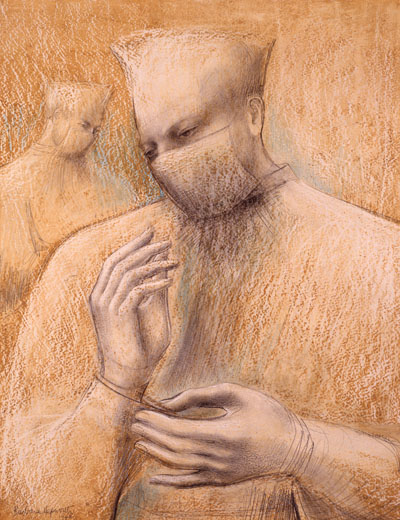The Hepworth has been garnering plaudits right and left as a new museum to be welcomed to the fold, and my first visit to this monolithic structure with its feet in Wakefield’s River Calder exceeded all expectations. Designed by David Chipperfield Architects, the ten linked blocks that make up this new suite of galleries are spacious and light-filled with excellent views out to the river and town. Restaurant, education centre and offices are on the ground floor, and upstairs the art comes into its own.
At the top of the stairs is a room of six classic sculptures by Barbara Hepworth (1903–75), whose name the museum has taken since this significant figure of British Modernism was born in Wakefield. The six starring works include a couple of beautiful early figurative carvings (‘Kneeling Figure’, 1932, and ‘Mother and Child’, 1934), when Hepworth seems very close to Henry Moore in form and ambition, before she moved away into a more rigorous abstraction of resonating clarity (see ‘Two Forms with White [Greek]’, from 1963).
The subsequent galleries set Hepworth within the context of Modern British art, mixing sculptures and paintings to very good effect. There are many excellent things on display here, some from Wakefield’s permanent collection, others borrowed from the Arts Council, Tate or such distinguished private collections as that formed by the retired Leeds doctor Jeffrey Sherwin. Among the especially memorable are Robert Adam’s superb wood sculpture ‘Apocalyptic Figure’ (1951) and Prunella Clough’s ‘Paper Mill, Men and Paper Bales’ (1950). Outside, the frothing torrent of the Calder laps the walls. Inside, Gallery 4 is devoted to Hepworth at work, with a display of films, models, tools and workbench. Gallery 5 contains an amazing collection of Hepworth plasters, given to the museum by the artist’s family.








Comments
Join the debate for just £1 a month
Be part of the conversation with other Spectator readers by getting your first three months for £3.
UNLOCK ACCESS Just £1 a monthAlready a subscriber? Log in